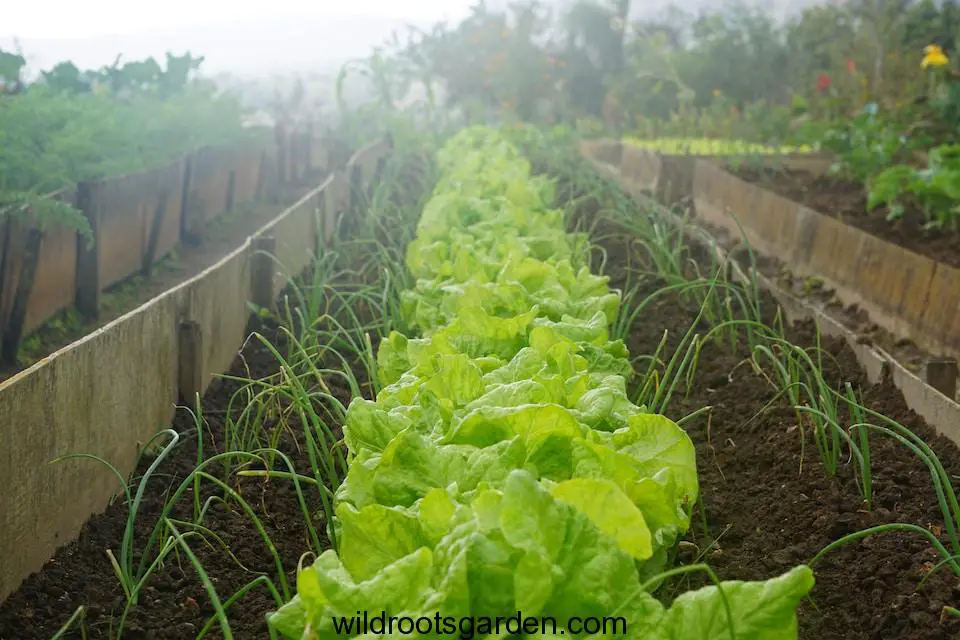For the best garden bed layout ideas, position tall plants at the back, mid-sized plants in the middle, and smaller plants in the front or as a border. Consider adding pollinator plants to attract beneficial insects that can help with both your harvest and pest control.
JUMP TO TOPIC
- 1 Table of Contents
- 2 Importance Of Garden Bed Layout
- 3 Factors To Consider In Garden Bed Layout
- 4 Basic Principles Of Garden Bed Layout
- 5 Simple Garden Bed Layout Ideas
- 6 Creative Garden Bed Layout Ideas
- 7 Utilizing Different Garden Bed Materials
- 8 Designing Functional And Beautiful Garden Beds
- 9 Planning And Mapping Your Garden Bed Layout
- 10 Maintaining And Adapting Garden Bed Layout
- 11 Additional Resources
- 12 Frequently Asked Questions For Garden Bed Layout Ideas
- 13 Conclusion
Table of Contents
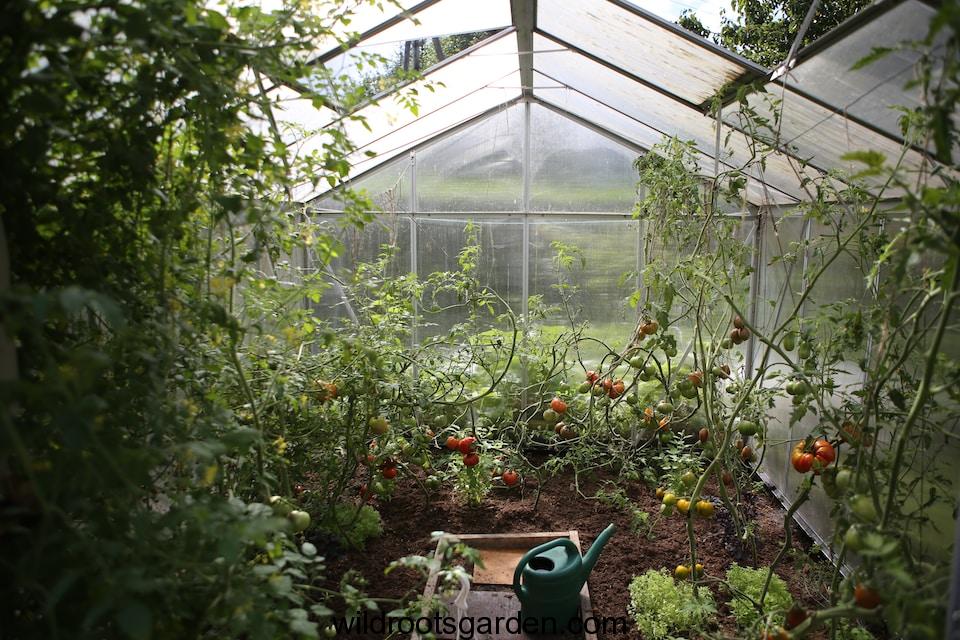
Importance Of Garden Bed Layout
Designing a garden bed layout is essential for optimal plant growth. Place taller plants at the back, medium-height plants in the middle, and smaller plants at the front or as borders. Including pollinator plants attracts beneficial insects that can improve your harvest and control pests.
Maximizing Space And Efficiency
One of the key reasons why garden bed layout is important is because it allows you to maximize the space and efficiency of your garden. By strategically placing plants and organizing your beds, you can make the most of the available area. A well-designed layout ensures that no space is wasted, allowing you to grow a greater variety of crops and make efficient use of your resources.
Enhancing Aesthetics
In addition to its functional benefits, garden bed layout plays a crucial role in enhancing the aesthetics of your garden. Whether you have a small urban garden or a sprawling backyard, an organized and visually-pleasing layout can transform your outdoor space into a beautiful oasis. By carefully selecting the placement of different plants, flowers, and foliage, you can create a harmonious and visually appealing design that reflects your personal style.
Promoting Plant Health And Productivity
A well-designed garden bed layout is essential for promoting plant health and productivity. By considering factors such as sunlight exposure, soil requirements, and companion planting, you can create an environment that is conducive to the growth and development of your plants. Proper spacing and arrangement of plants also ensure good air circulation and prevent diseases from spreading. Additionally, a thoughtful layout allows you to easily access and maintain your plants, resulting in higher yields and healthier produce.
Factors To Consider In Garden Bed Layout
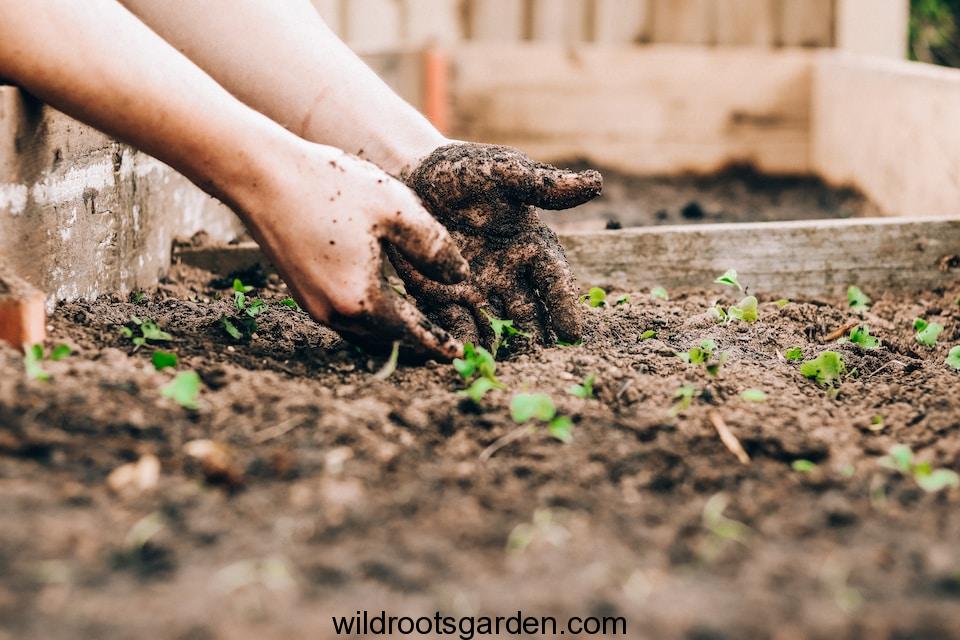
When planning a garden bed layout, it’s important to consider various factors that can impact the success of your plants. From sunlight and shade to soil type and drainage, as well as accessibility and maintenance, each aspect plays a crucial role in creating a thriving garden. By taking these factors into account, you can design a garden bed that maximizes plant growth and enhances the overall aesthetics of your outdoor space.
Sunlight And Shade
The amount of sunlight and shade that your garden bed receives is a significant factor to consider. Different plants have varied requirements when it comes to sunlight exposure. Some thrive in full sun, while others prefer partial shade or even full shade. To determine the sun and shade patterns in your garden, observe the area throughout the day and take note of the areas that receive the most sunlight and those that are shaded. Design your garden bed layout accordingly, placing sun-loving plants in sunnier spots and shade-tolerant varieties in shadier areas.
Soil Type And Drainage
The soil type and drainage in your garden bed are crucial for the health and growth of your plants. Certain plants thrive in well-drained soil, while others require moist or even wet conditions. Conduct a soil test to determine the composition and pH level of your soil. This will help you understand its drainage and fertility properties. Based on the test results, you can choose plants that are best suited for your soil type. Additionally, consider incorporating organic matter or amendments to improve soil quality and drainage, ensuring optimal conditions for your plants.
Accessibility And Maintenance
Ensuring accessibility and easy maintenance are important factors in garden bed layout. Consider the size and orientation of your garden bed, ensuring that there is enough space between rows or plants for easy access. This makes tasks such as watering, weeding, and harvesting more convenient. Additionally, think about the overall maintenance requirements of the plants you choose. Some varieties may require frequent pruning or deadheading, while others are more low-maintenance. Design your garden bed layout in a way that allows for efficient maintenance practices, making it easier for you to care for your plants and keep your garden looking beautiful.
Basic Principles Of Garden Bed Layout
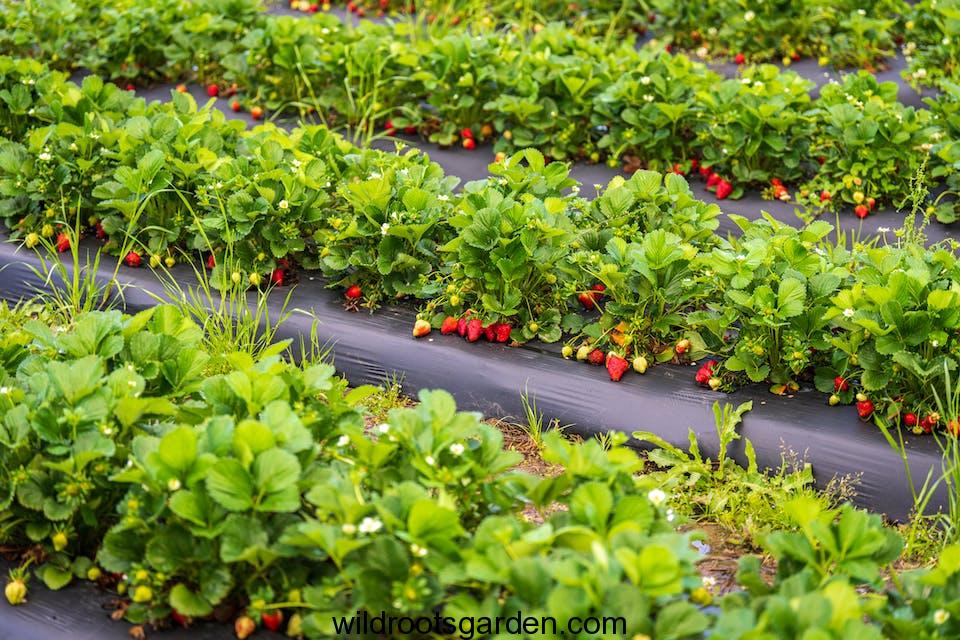
When it comes to creating a beautiful and functional garden bed, there are some basic principles to keep in mind. These principles will help you arrange your plants in the most efficient and harmonious way, ensuring that your garden thrives and looks visually appealing. In this article, we will explore three important aspects of garden bed layout: arranging plants by height, creating pathways and borders, and using companion planting techniques. By following these principles, you can design a garden bed that not only maximizes space but also enhances the overall aesthetic appeal of your outdoor space.
Arranging Plants By Height
One crucial aspect of garden bed layout is arranging plants by height. By strategically placing plants of different heights, you can create a visually appealing and well-balanced garden bed. The general rule of thumb is to place taller plants towards the back of the bed, mid-sized ones in the middle, and smaller plants in the front or as a border. This arrangement ensures that every plant gets enough sunlight without overshadowing others.
Creating Pathways And Borders
In addition to arranging plants by height, creating pathways and borders is another important consideration for garden bed layout. Pathways not only provide easy access to your plants but also add structure and visual interest to your garden. You can use various materials such as gravel, stepping stones, or bricks to create pathways that complement the overall design of your garden bed. Additionally, borders made of stones or ornamental plants can delineate different sections of the garden, creating a cohesive and organized look.
Using Companion Planting Techniques
Companion planting is a technique that involves growing compatible plants together to maximize their growth potential and deter pests. By strategically pairing plants that have beneficial relationships, you can create a healthier and more productive garden. For example, planting marigolds alongside your vegetables can help repel pests, while growing herbs like basil can enhance the flavor of nearby plants. Companion planting not only promotes biodiversity but also reduces the need for chemical pesticides, making your garden more eco-friendly.
Simple Garden Bed Layout Ideas
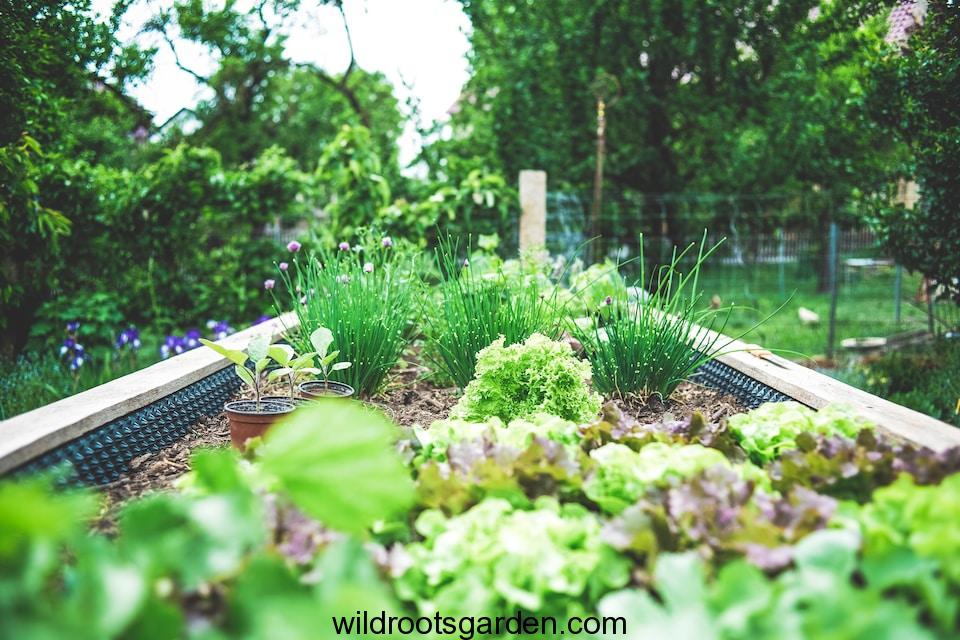
When it comes to designing your garden bed, the layout plays a crucial role in determining the success and productivity of your plants. Whether you have a small backyard or a spacious garden, choosing the right layout can optimize space, enhance aesthetics, and make maintenance easier. In this article, we will explore three simple garden bed layout ideas: traditional row planting, square foot gardening, and circular bed design.
Traditional Row Planting
In traditional row planting, plants are arranged in straight rows with pathways in between. This classic layout is ideal for larger gardens as it maximizes space and allows for easy access. Here’s how you can implement traditional row planting:
- Step 1: Plan the layout: Allocate space for each crop based on its size and growth characteristics. Consider placing taller plants at the back and shorter ones in the front.
- Step 2: Prepare the soil: Ensure the soil is well-drained, fertile, and free of weeds. Amend the soil with organic matter if needed.
- Step 3: Create rows: Use a garden hoe or a rake to create straight rows with a consistent spacing between each row.
- Step 4: Plant the seeds or seedlings: Follow the recommended planting depth and spacing for each crop. Use a garden dibber or your fingers to create holes and gently place the seeds or seedlings.
- Step 5: Water and maintain: Water the plants regularly and provide necessary support such as stakes or trellises for climbing plants.
Square Foot Gardening
Square foot gardening is a space-efficient method that involves dividing the garden bed into 1-foot by 1-foot squares. This layout is perfect for small gardens or raised beds. Here’s how you can implement square foot gardening:
- Step 1: Plan the grid: Divide the garden bed into square sections using twine, wooden stakes, or garden markers.
- Step 2: Prepare the soil: Ensure the soil is loose, well-drained, and enriched with compost. Fill each square with a lightweight potting mix.
- Step 3: Plant intensively: Follow the square foot gardening guide to determine the number of plants per square. Plant crops closer together to optimize space and discourage weed growth.
- Step 4: Provide support when needed: Install trellises or cages for vining plants to save space.
- Step 5: Water and maintain: Water the plants regularly and be mindful of the limited soil volume in each square.
Circular Bed Design
Circular bed design adds visual interest and allows for a more free-flowing arrangement of plants. This layout is particularly suited for smaller gardens or as a focal point. Here’s how you can implement a circular bed design:
- Step 1: Choose a location: Select a suitable spot for the circular bed, considering factors such as sunlight exposure and existing landscape features.
- Step 2: Prepare the soil: Clear the area of weeds and loosen the soil. Amend it with compost or fertilizers as needed.
- Step 3: Create the circular shape: Use a garden hose or a rope to outline the circular shape. Adjust the size of the bed based on the available space.
- Step 4: Plant in a spiral pattern: Start planting at the center of the bed and work your way outwards in a spiral pattern. Consider placing taller plants towards the center and shorter ones towards the edges.
- Step 5: Water and maintain: Water the plants thoroughly after planting, and continue to water as needed. Remove weeds regularly to maintain the neat appearance of the circular bed.
Whichever garden bed layout you choose, remember to consider factors such as sunlight exposure, soil quality, and the specific needs of your plants. Experimenting with different layouts can be fun and help you find the most efficient and visually appealing design for your garden.
Creative Garden Bed Layout Ideas
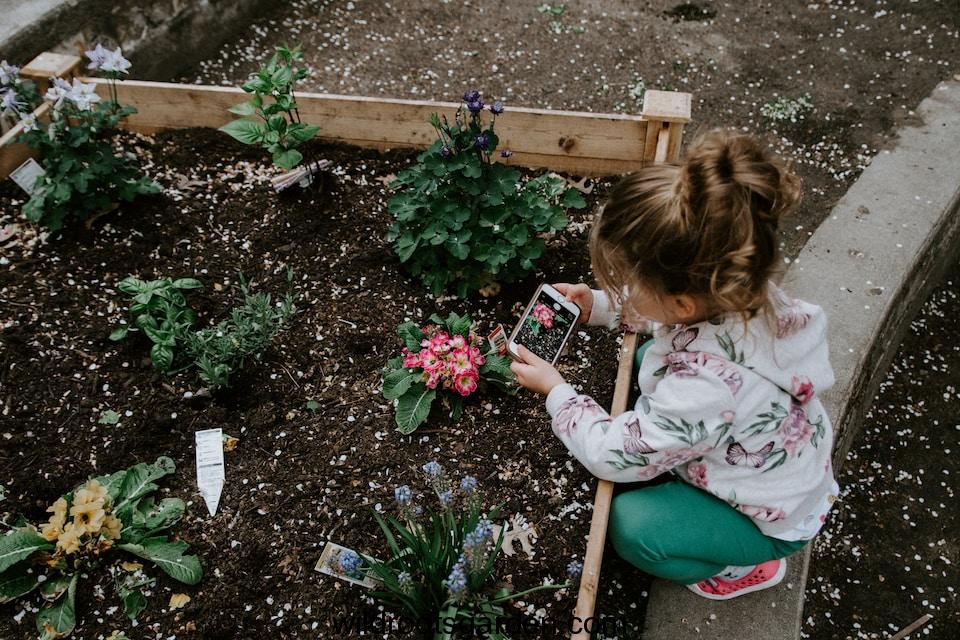
Discover creative garden bed layout ideas to enhance your garden’s beauty. From arranging plants by height to adding pollinator plants, these ideas will help you create a visually appealing and productive garden bed.
Vertical Gardening
Vertical gardening is a fantastic way to maximize your garden bed space and add a unique element to your backyard. By utilizing vertical structures such as trellises, arbors, or vertical planters, you can grow a wide variety of plants vertically, saving space and creating a visually stunning garden.
- Utilize tall-growing plants such as tomatoes, cucumbers, or pole beans that can climb up trellises or stakes.
- Hang planters or use wall-mounted containers to grow herbs, strawberries, or trailing flowers.
- Consider using vertical hanging gardens or living walls for a striking display of plants.
Tiered Raised Beds
Tiered raised beds offer both functionality and aesthetic appeal. By creating multiple levels or tiers, you can organize your garden bed in a visually pleasing way while providing better accessibility and drainage for your plants.
- Use tiered raised beds to create a cascading effect, with taller plants at the back and shorter plants at the front.
- Plant different types of crops in each tier to maximize space and create a diverse garden.
- Consider adding trailing plants or vines on the edges of the tiers to create a beautiful overflow of foliage.
Keyhole Garden Design
The keyhole garden design is a clever layout that combines a circular bed with a composting system in the center. This design promotes efficient use of resources and creates a unique focal point in your garden.
- Create a circular raised bed with a notch or “keyhole” shape on one side for easy access to the center composting bin.
- Place kitchen scraps, organic material, and compostable waste in the center composting bin, which will naturally enrich the soil and provide nutrients to surrounding plants.
- Plant a variety of vegetables, herbs, and flowers around the circular bed, taking advantage of the accessible space and nutrient-rich soil.

Credit: www.gardencityharvest.org
Utilizing Different Garden Bed Materials
When it comes to creating a garden bed, choosing the right material is essential for its appearance, functionality, and durability. The material you choose can greatly impact the overall aesthetic of your garden, as well as determine the success of your plants. Here are some popular garden bed materials and how you can utilize them in your garden:
Wooden Raised Beds
Using wood for your garden beds not only adds a natural and rustic feel to your garden, but it also provides excellent drainage and insulation for your plants. The versatility of wooden raised beds allows you to customize the size and shape according to your garden’s needs. Additionally, you can easily build them yourself with basic carpentry skills and affordable materials.
Some advantages of wooden raised beds include:
- Ability to use untreated or treated wood, depending on your preference
- Long-lasting and durable
- Easy for planting, weeding, and harvesting
- Can be easily elevated for accessibility
- Can be filled with high-quality soil for optimal plant growth
Stone Or Brick Beds
Stone or brick garden beds offer a more formal and structured look to your garden. These materials are known for their durability and longevity, making them a great investment for any garden. Stone or brick beds can be constructed using individual stones/bricks or as a continuous wall, depending on your design preference.
Some advantages of stone or brick beds include:
- Excellent heat retention, suitable for heat-loving plants
- Provide a high level of protection for the plants
- Can be used as a seating area or decorative edge
- Weather-resistant and low-maintenance
Metal Or Plastic Beds
Metal or plastic garden beds offer a modern and sleek look to any garden. These materials are lightweight and easy to maneuver, making them a great option for renters or those who frequently relocate their garden beds. Metal beds are typically made of galvanized steel or aluminum, while plastic beds are usually made of sturdy, BPA-free plastic.
Some advantages of metal or plastic beds include:
- Highly durable and resistant to rot, insects, and warping
- Provide excellent drainage for plants
- Easy to clean and sanitize
- Can be easily assembled and disassembled
- Can be placed on any surface, including concrete or gravel
No matter which material you choose for your garden bed, make sure to consider factors such as cost, maintenance, and the look you want to achieve. By utilizing different garden bed materials, you can create a visually appealing and functional garden space that suits your gardening needs.
Designing Functional And Beautiful Garden Beds
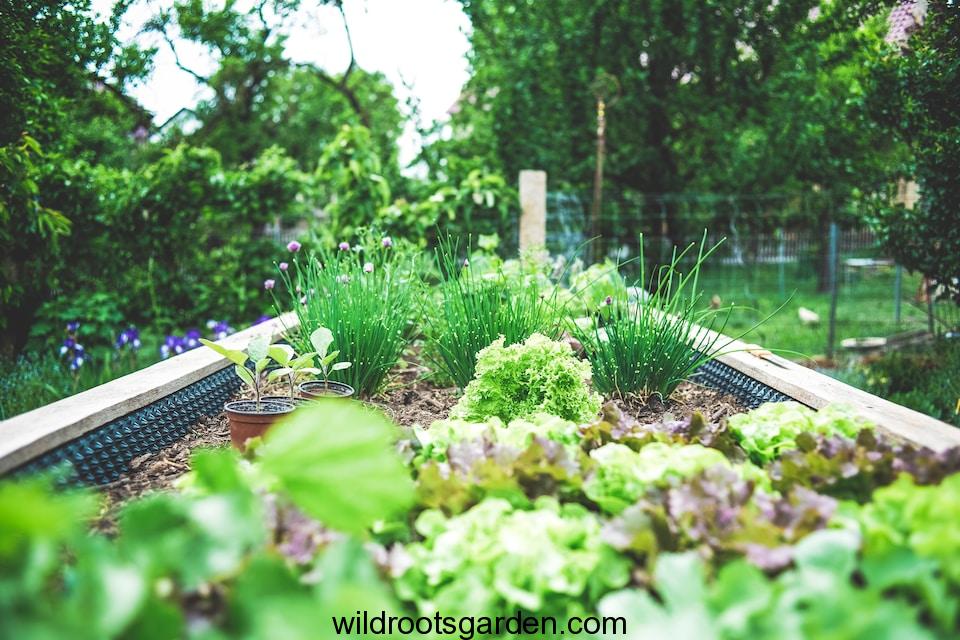
When it comes to garden bed layout ideas, designing functional and beautiful beds is essential for creating an eye-catching and productive garden. Consider incorporating different elements and features to optimize the layout and make the most of your gardening space. In this blog post, we will explore three key aspects to focus on when designing your garden beds: choosing the right plants, incorporating ornamental features, and adding trellises and support structures.
Choosing The Right Plants
One crucial aspect of designing functional and beautiful garden beds is selecting the right plants. When choosing plants, consider their height, size, and growth habits. As a general rule, it’s best to place taller plants towards the back of the bed, mid-sized plants in the middle, and smaller plants in the front or as a border. This arrangement ensures that all plants receive adequate sunlight and air circulation.
Additionally, incorporating companion plants can be beneficial for both aesthetics and functionality. Companion plants are those that have a symbiotic relationship, benefiting each other when grown together. Consider adding pollinator plants to attract beneficial insects that can not only help with pollination but also prey on garden pests, promoting a healthier garden ecosystem.
Incorporating Ornamental Features
Garden beds can be more than just functional. By incorporating ornamental features, you can enhance the overall visual appeal of your garden. Consider adding decorative elements such as statues, birdbaths, or colorful planters to create focal points within your garden beds. These elements add a touch of creativity and personal style while complementing the surrounding plants.
Furthermore, using a variety of plant textures, colors, and foliage types can add interest and depth to your garden beds. Mix and match different plant varieties to create visually appealing combinations. Group plants with contrasting colors or textures together to create a striking visual contrast.
Adding Trellises And Support Structures
Incorporating trellises and support structures is another way to design functional and beautiful garden beds. These structures provide support for climbing or vining plants, maximizing vertical space and adding visual interest to your garden. Trellises can be made from materials such as wood, metal, or even recycled items.
When adding trellises or support structures, ensure they are sturdy enough to support the weight of the plants. Install them at the appropriate distance from the plants to allow for proper growth and airflow. Additionally, consider the aesthetics of the trellis or support structure and choose one that complements the overall garden design.
Designing functional and beautiful garden beds requires careful consideration of plant selection, incorporating ornamental features, and adding trellises and support structures. By following these tips, you can create visually appealing and productive garden beds that bring joy and satisfaction to your gardening endeavors.

Credit: www.pinterest.com
Planning And Mapping Your Garden Bed Layout
Designing the layout for your garden bed can be challenging, but with careful planning and mapping, you can create a beautiful and functional space. Consider the height and size of your plants, and don’t forget to include pollinator plants to attract helpful insects.
Measuring And Marking The Area
Before you start planning your garden bed layout, it’s important to measure and mark the area where you want to create your garden bed. This will help you determine how much space you have to work with and ensure that you maximize the use of your available space. Start by measuring the length and width of the area and sketching it out on a piece of grid paper or using an online garden planning tool.
Considering Crop Rotation And Succession Planting
Crop rotation is an important consideration when planning your garden bed layout. Rotating crops helps prevent the buildup of pests and diseases in the soil, and improves overall soil health. It involves planting different types of crops in different areas of the garden bed each year. To implement crop rotation, divide your garden bed into sections and rotate the crops in each section every year. This will help maintain the nutrient balance in your soil and ensure a healthy and productive garden.
In addition to crop rotation, succession planting is another strategy you can use to maximize your garden bed space. Succession planting involves planting crops in stages, so that as soon as one crop is harvested, another is ready to be planted. This allows you to continuously harvest crops throughout the growing season and make the most of your garden bed.
Using Online Garden Planning Tools
In the digital age, there are a variety of online garden planning tools available that can help you design and map out your garden bed layout. These tools allow you to visualize your garden bed and experiment with different plant placements and arrangements before physically planting them.
One popular online garden planning tool is Gardeners.com’s Kitchen Garden Planner. This tool allows you to customize the size and shape of your garden bed and provides a wide selection of plant options to choose from. It also provides information about each plant’s spacing requirements, which can help you plan and arrange your garden bed more effectively.
Another useful tool is SmartDraw’s Garden Design Software. This tool allows you to create detailed garden bed layouts, including pathways, plant placements, and even hardscape features like trellises and raised beds. It also provides a variety of templates and design ideas to inspire your garden bed layout.
By using online garden planning tools, you can ensure that your garden bed layout is well thought out and optimized for your specific needs and preferences. These tools can save you time and effort in the planning process, and help you create a beautiful and functional garden bed.
Maintaining And Adapting Garden Bed Layout
Maintaining and adapting your garden bed layout is crucial to ensure the ongoing health and productivity of your plants. By staying on top of tasks such as weeding, pruning, fertilizing, reassessing and adjusting your layout, and implementing pest and disease control measures, you can create a thriving garden that will be a joy to behold.
Weeding, Pruning, And Fertilizing
Regular weeding is essential to keep your garden beds free from unwanted plants that compete with your crops for nutrients and sunlight. It’s best to weed by hand, pulling out the entire root to prevent re-growth. Mulching your beds can also help suppress weeds.
In addition to weeding, pruning is necessary to maintain the shape and health of your plants. Prune away any dead or damaged branches, as well as any branches that are crossing or rubbing against each other. This will improve airflow and prevent disease.
Fertilizing is important to provide your plants with the essential nutrients they need to thrive. You can use organic fertilizers such as compost or well-rotted manure, or opt for commercial fertilizers specifically formulated for your plants’ needs.
Reassessing And Adjusting Layout Over Time
It’s important to reassess and adjust your garden bed layout over time to accommodate the changing needs of your plants. As your plants grow, they may require more space or need to be moved to a different location to ensure optimal growth.
Consider the height and spread of your plants when deciding on the layout. Taller plants should be placed at the back of the bed, while smaller plants can be positioned toward the front or used as borders.
Regularly evaluate your garden bed layout and make adjustments as needed. This can include removing overcrowded plants, adding support structures for climbing plants, or relocating plants that are not thriving in their current spot.
Implementing Pest And Disease Control Measures
Preventing and managing pests and diseases is crucial to maintaining a healthy garden. Regularly check your plants for signs of damage or infestation, such as chewed leaves or discoloration.
Implement organic pest control methods such as handpicking insects, using insecticidal soaps or oils, or introducing beneficial insects that prey on garden pests. In cases of severe infestation, you may need to resort to organic pesticides.
To prevent the spread of diseases, practice good garden hygiene by removing infected plant material and disinfecting pruning tools between uses. Crop rotation can also help reduce the risk of disease by preventing the build-up of pathogens in the soil.

Credit: www.yardshare.com
Additional Resources
Books And Publications On Garden Design
- What is the best way to arrange garden beds? – Bob Vila
- Everything You Need to Know About Starting a Vegetable Garden – Good Housekeeping
Frequently Asked Questions For Garden Bed Layout Ideas
What Is The Best Layout For Planting A Garden?
The best layout for a garden is to organize plants by height. Place tall vegetables at the back of the bed, mid-sized ones in the middle, and smaller plants in the front or as a border. Consider adding pollinator plants to attract beneficial insects.
What Is The Best Way To Arrange Garden Beds?
The best way to arrange garden beds is to follow a simple guideline: place tall plants at the back, mid-sized plants in the middle, and smaller plants in the front or as a border. Consider adding pollinator plants to attract beneficial insects that help with pest control.
How Do You Arrange Vegetable Garden Plants?
To arrange vegetable garden plants, follow these steps: 1. Place tall veggies at the back, mid-sized ones in the middle, and small plants at the front or as a border. 2. Consider adding pollinator plants to attract beneficial insects. 3. Design the layout with the tallest plants in the center of the bed, medium-height plants on the sides, and shortest crops along the edges.4. Choose an appropriate location, style, and color scheme for your garden bed. 5. Remove grass, add soil amendments, and put in the plants.
How To Design My Garden Bed?
To design your garden bed, follow these steps: 1. Choose a suitable location in your yard. 2. Decide on a style and color scheme for your bed. 3. Select the plants you want to grow. 4. Lay out the bed, placing taller plants at the back and smaller ones in the front.5. Remove any grass or weeds from the area. 6. Improve the soil with amendments if needed. 7. Consider adding a weed barrier, if desired. 8. Plant your chosen plants in the bed. By following these guidelines, you can create a well-designed and functional garden bed.
Conclusion
Designing the layout of your garden bed can greatly impact the success of your vegetable garden. By arranging plants according to their height and incorporating pollinator plants, you can maximize your harvest and control garden pests. Choosing an appropriate location, selecting a style and color scheme, and properly preparing the soil are all essential steps in creating a thriving garden bed.
Whether you opt for a traditional row design or a more creative approach, careful planning and attention to detail will result in a beautiful and productive garden.

